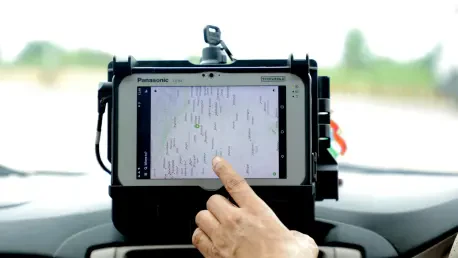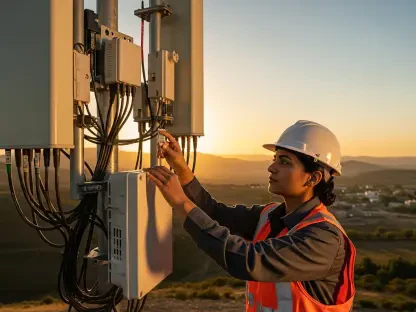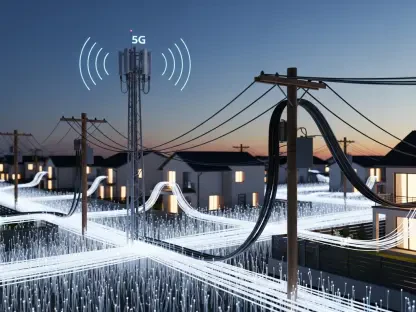The world stands on the brink of a communications revolution as AST SpaceMobile embarks on an ambitious mission to transform how we connect. Founded by Abel Avellan in 2017, AST SpaceMobile aspires to bridge digital divides by providing direct satellite-to-mobile broadband services. Unlike traditional methods that rely on terrestrial cell towers, this burgeoning company aims to beam connectivity directly from space to standard mobile phones. This model, once a science fiction fantasy, promises to reach remote and underserved regions, capturing the attention of both telecommunications experts and avid investors. AST SpaceMobile’s journey intertwines groundbreaking innovation, strategic collaboration, and deft navigation of regulatory landscapes, setting the stage for profound changes in global communication.
Breaking Boundaries: The Vision and Mission
Addressing Digital Inequity
AST SpaceMobile’s inception was driven by a compelling vision to mitigate global digital inequality, a critical barrier faced by nearly half of the world’s population. Founder Abel Avellan recognized that the primary obstacle was not the technology on the user end but rather the lack of viable infrastructure in isolated areas. The absence of traditional cell towers in such locations necessitated an innovative solution. AST SpaceMobile’s mission became clear: to offer direct satellite-to-mobile connectivity, effectively defying conventional wisdom in telecommunications. This ambitious framework not only addresses gaps in infrastructure but also seeks to deliver seamless connectivity to billions without the need for specialized hardware alterations.
The Technological Shift
AST SpaceMobile’s journey is marked by significant technological advancements that push the boundaries of what was once considered achievable. Central to this progress stands the development of large, flat-panel satellites known as BlueWalker and BlueBird. These satellites are skillfully engineered to facilitate direct-to-device communication—a paradigm shift from conventional satellite operations. In 2019, the successful launch of the initial test satellite, BlueWalker 1, underscored the potential of this groundbreaking technology. This advancement was pivotal as it validated the fundamental aspects of AST SpaceMobile’s vision. The subsequent launch of BlueWalker 3, equipped with advanced antenna arrays, further solidified the company’s capability to offer robust connectivity from space, seamlessly integrating with unmodified smartphones.
Strategic Collaborations and Market Positioning
Forging Global Partnerships
The path from a visionary concept to a commercially viable reality is paved with strategic partnerships. AST SpaceMobile has astutely partnered with prominent global mobile network operators such as Vodafone, AT&T, and Rakuten. These collaborations have not only validated its technological prowess but have also opened avenues for extensive market integration. By bridging coverage gaps efficiently, these strategic alliances empower mobile operators to enhance their services, potentially transforming their network offerings. AST SpaceMobile’s novel approach allows it to function as both a satellite operator and a telecom collaborator, presenting an attractive revenue-sharing proposition for terrestrial networks. This fusion of roles has garnered significant interest from investors seeking to capitalize on the scalable potential of this disruptive technology.
Navigating Regulatory Hurdles
Despite its advancements, AST SpaceMobile faces a labyrinth of regulatory challenges, particularly concerning approvals in the U.S. and European markets. The necessity to mitigate potential interference with existing terrestrial networks places the company in a delicate position. Securing regulatory clearances is paramount for the deployment of their expansive satellite constellation, which is projected to exceed 100 satellites. Navigating this complex regulatory terrain demands strategic finesse and persistent negotiations. Nonetheless, overcoming these hurdles could facilitate AST SpaceMobile’s transformative impact on global connectivity, effectively liberating telecommunications from terrestrial constraints and opening a new frontier in the communication sector.
Challenges and Competitive Landscape
Financial and Technical Challenges
The scale of AST SpaceMobile’s ambition is reflected in the steep financial and technical demands of its undertaking. Deploying and maintaining a constellation of over 100 satellites requires substantial capital investment, with each satellite amounting to tens of millions of dollars. This financial requirement underscores the need for meticulous financial strategy and robust investment channels to sustain its momentum. Furthermore, ensuring flawless satellite manufacturing and reliable launch operations remains a critical success factor. These components are essential in transitioning from technology demonstration to fully commercialized services. Addressing these challenges harmoniously will dictate AST SpaceMobile’s ability to realize its vision and set forth a new era of connectivity.
The Expanding Competitive Field
AST SpaceMobile’s pursuit of pioneering space-based communication faces increasing competition from initiatives such as SpaceX’s Starlink and Amazon’s Project Kuiper. These alternative models, though different in their approach, share the common goal of global broadband expansion. However, AST SpaceMobile distinguishes itself through its unique offering of direct-to-mobile phone connectivity, a capability its rivals do not directly target. This distinctive positioning presents opportunities for differentiation and new market capture. Nevertheless, the path to success is fraught with execution risks, demanding flawless execution from satellite deployment to service activation. As the market heats up, AST SpaceMobile’s ability to leverage its unique strengths while navigating competitive pressures will determine its long-term impact and market presence.
Future Directions and Innovation Potential
Recent Milestones and Projections
Recent developments between 2024 and 2025 showcase AST SpaceMobile’s steady progress in technical milestones and market inroads. The successful testing of 4G and 5G voice and data transmissions from standard smartphones underscores the efficacy of its technology. Alongside expanded partnerships and extended regulatory approvals, AST SpaceMobile is setting a solid groundwork for its future endeavors. The forthcoming launches of the BlueBird constellation are eagerly anticipated by analysts and investors alike, as these events are pivotal in redefining cellular coverage economics. Prospective applications range across disaster response, maritime communications, and connectivity for regions previously untouched by terrestrial networks, highlighting the transformative potential of this innovation.
The Road Ahead
AST SpaceMobile was established with a powerful vision aimed at bridging the gap of global digital inequality, a significant hurdle impacting almost half of the world’s population. Founder Abel Avellan identified that the core problem was not the technology users had but the absence of adequate infrastructure in remote areas. Traditional cell towers are often not feasible in these places, prompting a need for an innovative approach. Thus, AST SpaceMobile set a mission: to enable direct satellite-to-mobile phone connectivity, challenging traditional telecommunications concepts. This bold strategy not only fills infrastructure gaps but also aims to provide uninterrupted connectivity to billions without requiring any changes to their existing hardware. The company’s mission is creative and revolutionary, as it steps beyond the need for ground-based towers and embarks on providing universal access to communication networks. Enabling connectivity without hardware modification paves the way for sustainable and inclusive technological advancement.









